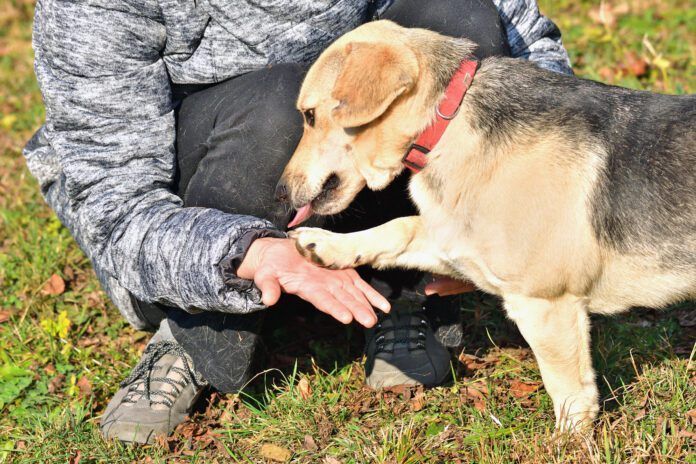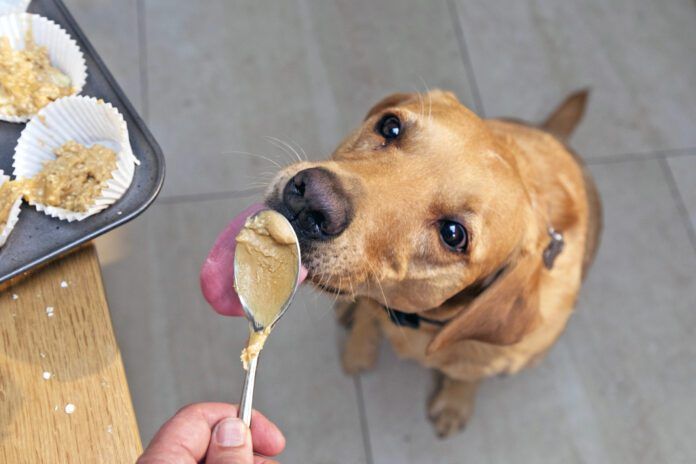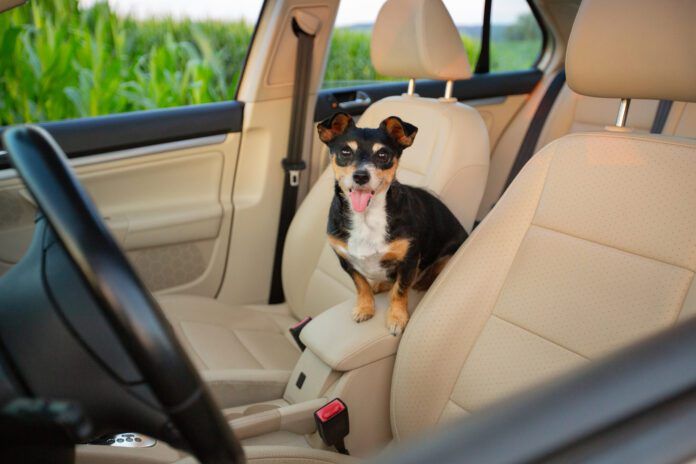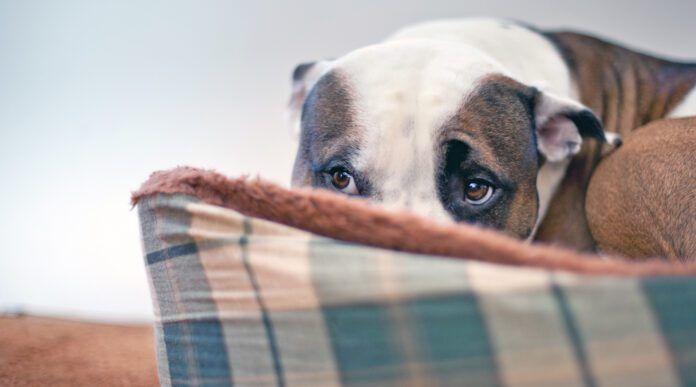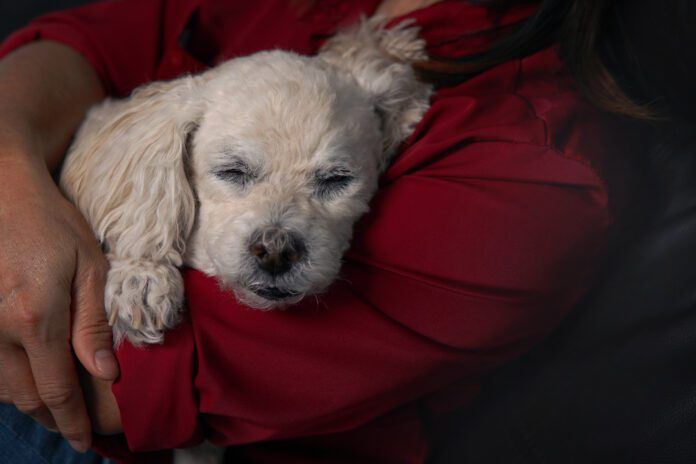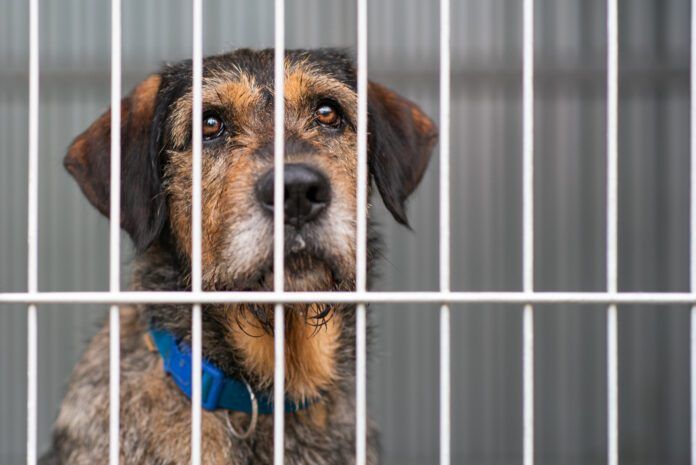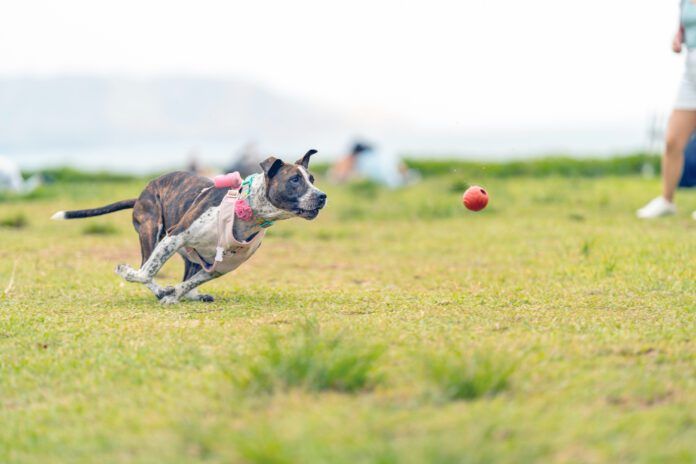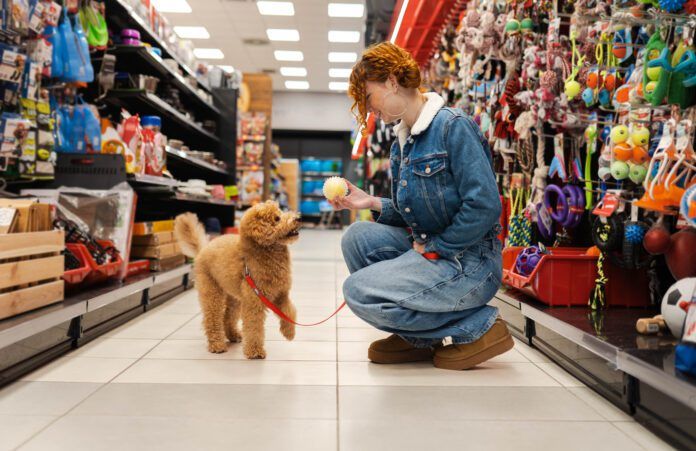Wherever Harley went, commotion followed. I had a hunch that even in death, his knack for turmoil would live on, and I wasn’t wrong.
The giant-sized, mischievous black Labrador was known for exploits that ranged from picnic raiding (which included jumping on top of a table at a Boy Scout BBQ to swipe their food. I can still hear the mothers’ horrified screams in my mind) and grabbing an entire roast off the stove to remaining unscathed after jumping out a second-story window to scare off a creepy-looking man.
Harley was rescued from a terrible situation, and he cheated death many times, but at the age of 14, his health declined, and I didn’t want him to suffer.
I started exploring in-home euthanasia options to let Harley go peacefully because my 90-pound, brave, wrecking ball of a dog turned into a shaking, cowering, nervous wreck at animal hospitals. There was no way I was going to let him leave this life that stressed.
Back in 2010, there were few in-home pet euthanasia services available. That’s in stark contrast to today, when the option to let your pet go in a non-animal hospital setting has become so popular that there are now local and nationwide companies with teams of veterinarians specializing in dog euthanasia at home.
The Growing Popularity of In-Home Euthanasia
The in-home pet euthanasia industry has blossomed so much that some say it’s grown into a movement.
“It gives me chills because it’s really a paradigm shift, a change in perspective on pet end-of-life care,” says veterinarian Nellie Wilbers, with Lap of Love Veterinary Hospice and In-Home Euthanasia.
The company currently has more than 400 veterinarians helping pet families in 40 states and continues to expand.
“The popularity has grown because our pets are family,” Dr. Wilbers says. “You have more time at home, where everyone can enjoy privacy, peace, and comfort as they say goodbye, and have a little more control over that experience.”
Some pet parents choose in-home euthanasia because it’s difficult, even painful, to get their dog in the carrier or car. Choosing dog euthanasia at home also saves people from having an overwhelming emotional experience at an animal hospital with other people around, and from that horrible ride home without their dog.
Veterinarian Juliana Lyles, owner of A Gentle Goodbye Veterinary Hospice in the Chicagoland area, says some families appreciate the option to have their dog’s last day filled with all the things they love.
“They’re giving their dog all of their favorite foods,” Dr. Lyles says. “The dog doesn’t know anything is different because they’re at home. It’s just any other day to them, which is so beautiful. They don’t fear death. They live in the moment, and for this to be just any other moment for them is—well, I think there’s no better way for them to go, if possible.”
All these reasons are what made in-home euthanasia so appealing to me, so I made an appointment for Harley.
How Does In-Home Pet Euthanasia Work?
Experts say planning ahead can be key with in-home euthanasia since it can be challenging to get a same-day appointment.
Contact Local Veterinarians or Companies in Advance
If you think you may have to let your dog go in the near future, start looking for in-home euthanasia providers. Ask your veterinarian, friends, and family for referrals. Search online in your area and read reviews.
Contact and interview providers. Ask questions about the company and its process. Can you have friends and family around? Can your dog be in their favorite backyard spot? What is the cost?
My survey found the price of in-home euthanasia today ranges from about $400 to $700, depending on the size of your pet, cremation wishes, and extras like paw prints and keepsakes. Ask if you can pay in advance. This way, you won’t be scrambling to find a credit card on the day of the appointment, with tears in your eyes.
Make sure you feel comfortable with the veterinarian or service who will be coming to your home to let your dog go.
“It’s one of the biggest decisions that we have to make as pet owners, and perhaps in our lives,” says Maggie Holl, a licensed vet tech and manager of MN Pets, which provides in-home pet euthanasia in the Minneapolis Twin Cities area.
Once you find a provider, register in advance with the company so you’re in their system, even if you aren’t ready to set an appointment date.
Decide “When is the Right Time?”
Many in-home euthanasia providers are happy to discuss the difficult decision of when to say goodbye to your dog.
“We offer quality of life telehealth appointments for people asking the tough question, ‘How do I know it’s time?’,” Dr. Lyles says. “It makes a big difference. Discussing it helps solidify their thoughts. There’s an expression that we use that it’s far better to be a week too early than an hour too late because a pet is suffering.”
The key is letting them go in peace, and that you and your family are also at peace and understand the decision.
“We’re never going to be ready to say goodbye, never, ever,” Dr. Wilbers says. “We encourage people to lead with love, not selfishly, but being brave and doing what’s best for their pet, even when it hurts us.”
What To Expect During an In-home Euthanasia Appointment
On appointment day, a veterinarian arrives at your home, works with you to make your dog comfortable and calm, and tries to accommodate your wishes.
Veterinarians say the actual euthanasia process they use is similar to in-office euthanasia.
“Most will give the pet some kind of sedation ahead of time,” Dr. Lyles says. “We give a combination of pain control, plus anti-anxiety medicine, plus sedation, so the dog is nice, comfy, and is getting sleepy. Then we give the euthanasia solution that causes them to pass away.”
The veterinarian usually gives you some time with your pet after they’ve passed. This may sound morbid, but my advice is to make sure there’s a plan for when it’s time to remove the body.
Have a Post-Mortem Plan
A few days before I let Harley go, my then-boyfriend brought over a large, blue, plastic sheet.
“What is this?” I said.
“Well,” he responded sheepishly, “This is just in case the veterinarian doesn’t bring anything to carry out Harley’s body. He’s a big dog.”
“Oh my gosh! Of course, the vet will have a plan. This looks like a tarp a serial killer would use!” I yelled, stuffing it into a closet.
On the appointment day, the veterinarian arrived, my boyfriend ushered him in, and soon after, Harley passed away in my arms. He knew how much I loved him. It was exactly as I had hoped.
Until the veterinarian uncomfortably looked around my fourth-floor apartment and said, “Um, ah, hmmm, do you have anything we can put Harley in to carry him out to my car?”
My eyes, blurry and nearly swollen shut from tears, saw my boyfriend’s face light up. He shot me that dreaded “I told you so” look. He jumped up and presented the relieved-looking vet with the serial killer tarp.
The pair moved Harley’s body onto the drop cloth looking thing, then each held an end of the tarp, picked it up, and awkwardly carried it out the door, down the hallway of my building, toward the elevator.
But no matter how they tried to disguise it, no matter how closely they struggled to hold the ends of the plastic sheet closed, there was no way to hide the fact there was a dead body in the tarp.
The suspicious-looking duo got in the elevator, and my boyfriend hoped it didn’t stop on any other floor so they could make a clean getaway.
Nope. One floor later, “Bing,” the doors opened, and a group of young women, all chatting about where to go out that night, got on.
They took one look at the two men in the back of the elevator uncomfortably holding a tarp, which clearly had a body inside, and froze.
The women’s conversation stopped, and the elevator ride continued in eerie silence. “Bing.” “Bing.” Each floor the elevator passed on its way to the ground floor felt like an eternity.
The doors finally opened, and the women ran out; to this day, I’m still surprised they didn’t call the police.
I’ve found that in-home euthanasia has come a long way since then. Years later, I arranged an appointment for another one of my dogs, using a different veterinarian who had a post-mortem plan.
All the in-home euthanasia companies I spoke to for this article assured me they all have arrangements, so the body-moving moment doesn’t end with a neighbor calling 9-1-1.
“I can confidently say things like that do not happen with practices that I have helped,” Holl says. “We are prepared for all sizes of pets. We have little baskets with blankets for the kitties and small dogs. We have a stretcher that we call a bed for large dogs. We lay it down and use a blanket and pillow […] so people don’t have to think about that stuff; their last memory is seeing their dog or their cat tucked into a little bed or basket.”
Veterinarians With Heart and Soul
One of the things that resonated with me after using two in-home euthanasia services was what a tough job these vets have. They show up at people’s homes where everyone is sobbing and suffers with them through the gut-wrenching pain of losing a beloved animal.
When I asked the veterinarians how they cope, they all said it’s a privilege to bring peace to the pets.
“I try to think about the dog who is having a tough time; he is probably in pain, and I get to make this a peaceful process for him,” Dr. Lyles says. “He is so loved that his family arranged to have in-home euthanasia, and that is an amazing gift you can give him.”
I definitely prefer in-home euthanasia, and I’m actually grateful for the disorganized Harley experience. The expected-yet-unexpected serial killer tarp moment just adds to all the infamous Harley stories that live on in our hearts.


